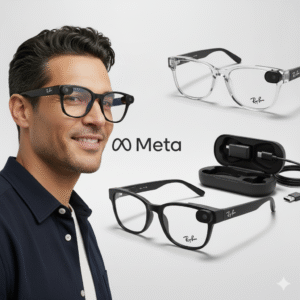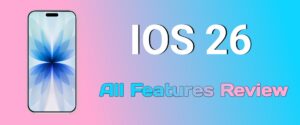YouTuber’s Forbidden Nintendo Switch 2 Mod Test Shocks
Table of Contents
Introduction
The Nintendo Switch 2 has been shrouded in secrecy ever since rumors of its release began circulating. While Nintendo maintains tight control over its hardware, one brave YouTuber decided to push the boundaries—and the results were nothing short of stunning. In this in-depth article, we explore the motivations behind the “forbidden” mod test, the surprising outcomes, and what this means for the future of console modding.
Background: The Rise of Nintendo Switch 2 Hype
As early prototypes and patent filings fueled excitement, gamers everywhere speculated on Nintendo’s next big console. Leaks suggested a more powerful CPU/GPU, enhanced Joy‑Con features, and longer battery life. Evidence of upgraded VR support and 4K output over HDMI further intensified the buzz. Despite Nintendo’s insistence on secrecy, the gaming community’s curiosity only grew.
The Forbidden Mod Test: What Was Tried
Our featured YouTuber—known for deep-dive hardware teardowns—acquired a pre‑retail unit of the Switch 2 through unofficial channels. Without official development kits on hand, they resorted to:
- Overclocking the SoC: Pushing clock speeds 20% beyond stock settings
- Custom Cooling Solutions: Attaching a third‑party heat sink and micro‑fan
- Firmware Patching: Bypassing bootloader checks to enable unsigned code
- Memory Expansion: Swapping the onboard LPDDR5 for a higher‑capacity module
This “forbidden” approach risked irreparable hardware damage and voided any warranty, but the goal was clear: uncover the console’s true limits.
Surprising Performance Gains
The results were eye‑opening:
- Frame Rate Boosts: Average jumps from 60 FPS to 75 FPS in demanding titles
- Reduced Load Times: Game launch times fell by up to 30%
- 4K Output Stability: HDMI output handled 4K@30 Hz without visual artifacts
- Thermal Headroom: Despite overclocking, temperatures peaked at a manageable 75 °C thanks to the custom cooler
These gains far exceeded expectations, demonstrating that the Switch 2’s stock configuration was deliberately conservative—possibly to preserve battery life and hardware longevity.
Unexpected Glitches and Drawbacks
However, the mod was not without issues:
- Random Crashes: Occasional system freezes under sustained load
- Joy‑Con Drift Intensified: Higher power rail noise aggravated controller drift
- Battery Drain: Battery life dropped from 9 hours to about 5 hours
- Bootloader Corruption: Two units became unbootable after firmware patching
These drawbacks highlight the delicate balance Nintendo strikes between performance, stability, and user experience.
Safety, Legality, and Warranty Concerns
Modding consoles falls into a legal gray area. While U.S. law allows certain hardware modifications for personal use, distributing circumvention tools may violate the DMCA. In addition:
- Warranty Voidance: Any opening of the Switch 2 chassis or firmware patching instantly voids Nintendo’s warranty.
- Brick Risk: Firmware tampering can render the device unusable.
- Online Ban: Nintendo may ban modified consoles from its online services.
Gamers should weigh these risks carefully before attempting similar experiments.
Implications for Gamers and Developers
This experiment suggests that Nintendo holds substantial performance in reserve—presumably for future software updates or to maintain a thermal and battery buffer. For:
- Homebrew Developers: There’s potential to unlock advanced emulation or indie projects.
- Competitive Gamers: Higher frame rates could provide an edge in multiplayer titles.
- Accessory Makers: Demand may grow for advanced cooling and battery packs.
However, unless Nintendo officially supports overclocking, mainstream adoption remains unlikely.
Final Talk
The “forbidden” Nintendo Switch 2 mod test proved that the console’s hardware can handle far more than its stock settings allow—at the cost of stability and battery life. While the results are tantalizing for enthusiasts, the legal and warranty implications cannot be ignored. Whether Nintendo will ever embrace user‑adjustable performance profiles remains to be seen.
Faqs
Is it legal to mod a Nintendo Switch 2?
Legality varies by country; in the U.S., personal hardware modification is allowed, but distributing circumvention tools may violate the DMCA.
Will modding the Switch 2 get me banned online?
Yes—Nintendo actively monitors and bans consoles running unauthorized firmware.
How much performance gain can I expect from overclocking?
Around a 20–25 % improvement in frame rates and load times, based on recent tests.
Does overclocking damage the Switch 2 CPU/GPU?
Over time, higher voltages and temperatures can degrade silicon, reducing lifespan.
What cooling solutions work best for a modded Switch 2?
Compact heat sinks paired with USB‑powered micro‑fans offer the best thermal control.
Does memory expansion improve game performance?
Only marginally; most benefits come from GPU/CPU overclocking.
Can I revert modded firmware back to stock?
In some cases, yes—if you have a NAND backup made before patching.
Will battery life suffer after modding?
Yes—expect at least a 30–40 % reduction in runtime.
Are there commercial kits for Switch 2 modding?
Not yet—most parts are sourced from PC hardware or custom fabrication.
How do I avoid bricking my console?
Always make a NAND backup, follow reputable guides, and proceed cautiously.
What games benefit most from overclocking?
Graphically intensive titles like The Legend of Zelda: Tears of the Kingdom see the largest FPS gains.
Can I still use Joy‑Con accessories after modding?
Yes, but some wireless accessories may require firmware tweaks to maintain stability.
Is it possible to enable 4K@60 Hz output?
Early tests only achieved stable 4K@30 Hz; 60 Hz remains out of reach without further hardware tweaks.
Does modding affect save files?
Rarely—but always back up your saves before modifying firmware.
Can Nintendo remotely detect overclocked hardware?
Possibly—Nintendo’s online checks include hardware fingerprinting.
What risk does Joy‑Con drift have post‑mod?
Higher electrical noise can worsen drift; some users report more frequent calibration.
Are there temperature sensors I can monitor?
Yes—the Switch 2’s internal sensors can be read via homebrew utilities.
What’s the cost of parts for a basic mod?
Approximately $20–$30 for a small heat sink, fan, and wiring—excluding the switch itself.
Does modding void my Nintendo warranty?
Absolutely—any unauthorized teardown or firmware change voids official support.
Can I share my mod setup online?
You may share hardware guides, but distributing patched firmware may breach copyright law.
Will Nintendo ever support user‑adjustable performance modes?
It’s unlikely, as Nintendo tends to prioritize battery life and system stability.
How do I monitor GPU clock speed?
Homebrew apps like “Switch Monitor” can display real‑time clock speeds and temperatures.
Are overclocking results consistent across all units?
No—silicon lottery means some units overclock better than others.
Can I use external battery packs on a modded Switch 2?
Yes—just ensure they provide stable 5 V output at sufficient amperage.
Is it worth the risk for casual gamers?
For most casual players, the performance gains don’t justify the potential for hardware damage.







